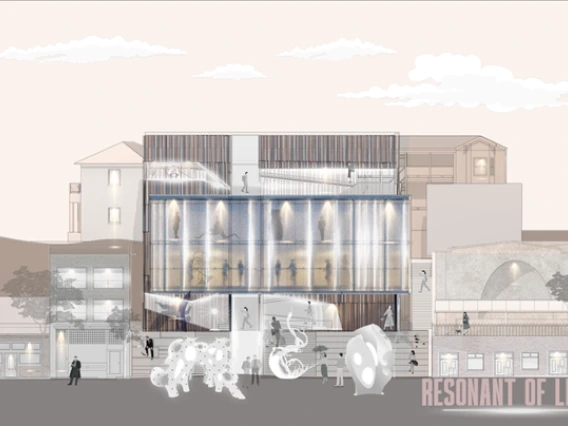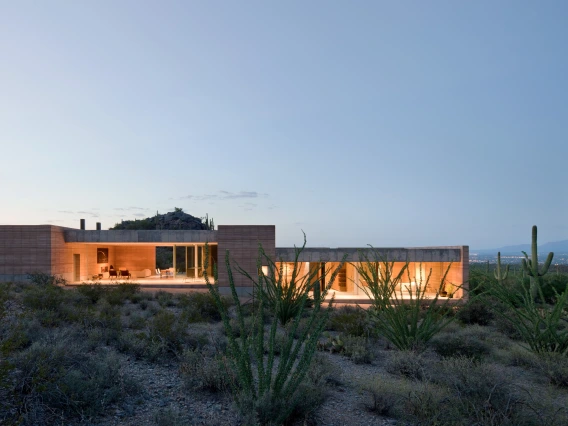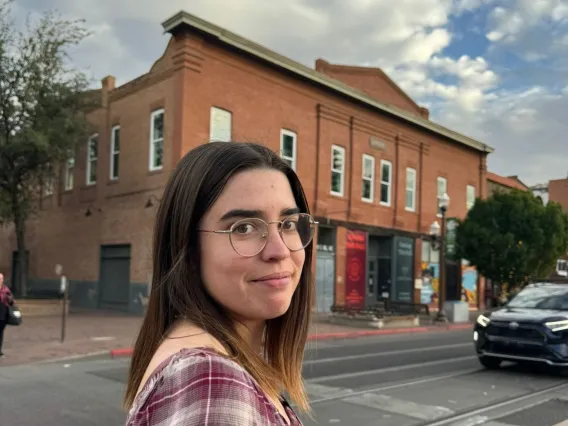CAPLA students reimagine accessible architecture through Universal Design
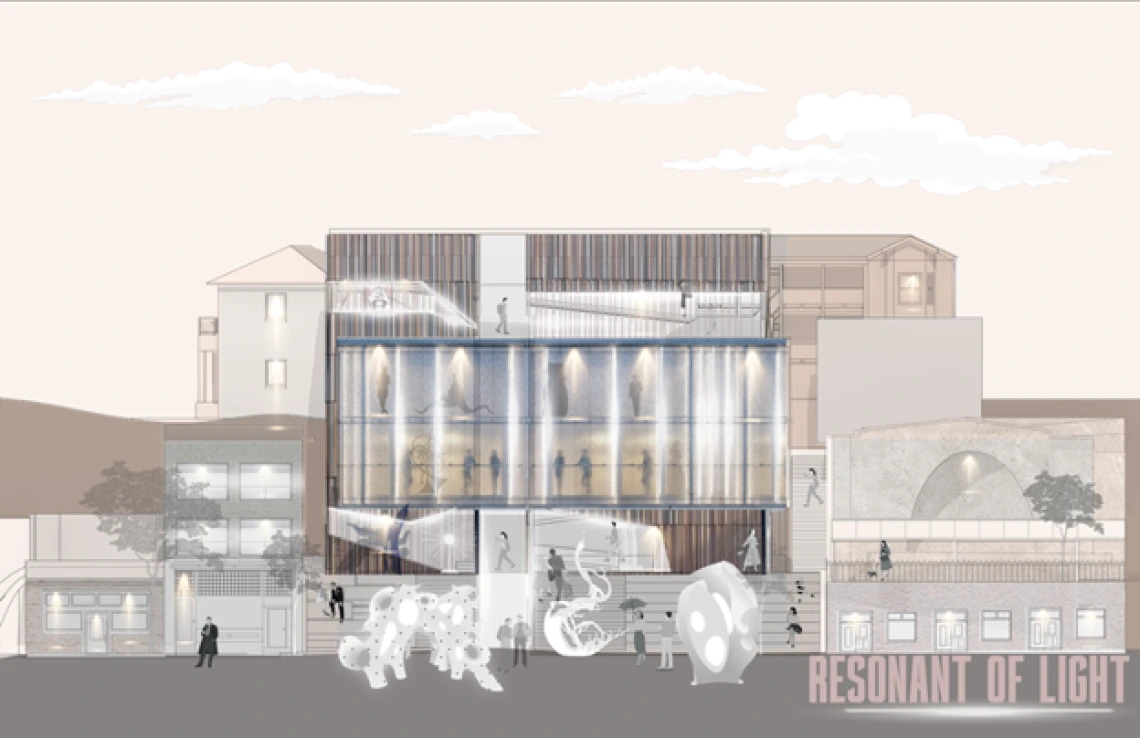
Taranm Akbary took first place with "Resonance of Light," a piece she said she imagined as a living installation where people could become part of the artwork through their presence alone.
Bachelor of Architecture students were honored last fall for projects that pushed the boundaries of inclusive and empathetic design, as part of the 2024 AGM Universal Design Student Awards.
Funded by Ascension Wheelchair Lifts and AGM Container Controls, the awards went to students in ARC301 Design Studio III: “Integrations of Place.” The course challenged students to work with Universal Design principles in mind — approaching architecture through the lens of empathy, accessibility and human experience.
“This semester focuses on people and place — synthesizing themes of Integrations of Place and Universal Design,” said studio coordinator Teresa Rosano. “As students consider and apply these principles, the process of imagining one’s experience through another’s lens has the potential to increase empathy — a practice that transcends architecture.”
Students explored two main projects — one set in the mountainous, ex-urban landscape of Mount Lemmon, and the other in the steep urban terrain of Bisbee. The final assignment asked students to design a flexible performance and art center in Bisbee that could support a wide range of creative disciplines and serve both the local community and visiting audiences.
Rosano said the studio asked students to look beyond just code compliance and think about how people with different physical and sensory experiences move through space.
“We are often unaware of our ableist biases,” she said. “This pedagogy provides a catalyst for us to identify those biases, understand how they are built into our physical environment and uncover creative solutions.”
Taranm Akbary took first place with Resonance of Light, a piece she said she imagined as a living installation where people could become part of the artwork through their presence alone.
“From the very beginning, I designed circulation as a central element — thinking of it as the art of movement,” Akbary said. “I wanted to ensure that at every point in the building, there was no inequality in how people navigated the space, regardless of ability.”
She created her piece with the intention of naturally drawing people through the space, using movement as a shared experience.
“The ramped floors allowed everyone, regardless of ability, to follow the same path and engage with the art in the same way — no separate routes, no barriers, just one continuous flow that celebrates inclusion,” Akbary said.
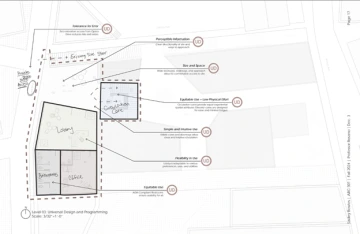
Sadey Bowles earned second place in the competition for "Bisbee Clayspace." A juror described her project as "...beautifully presented and accessibility is considered at literally every level and turn. The project's village concept elegantly translates into a compelling spatial experience, and the connection the project has to the park is gracious and effective."
For second-place winner Sadey Bowles, the challenge was both deeply creative and personally significant. Her project, Bisbee Clayspace, embraced Universal Design through multi-level circulation, intuitive wayfinding and thoughtful use of natural light.
“This project imagined a ceramics center in Bisbee as an inclusive, experiential village that bridged public engagement with focused artistic practice,” Bowles said. “It was inspired by both my own ceramics experience and by Bisbee’s layered urban fabric and strong sense of community.”
Bowles said working within the constraints of topography while maintaining accessibility pushed her to think more holistically.
“Integrating a multi-level design that encourages interaction required careful planning of elevation changes and experiential continuity,” she said.
Akbary and Bowles reflected on their takeaways from the competition, and how it made them stronger architects.
“Winning the award was incredibly meaningful — not just as a personal milestone, but as validation that accessible design can be creative, bold and forward-thinking,” Akbary said.
“It showed me that accessibility doesn’t have to limit creativity. Instead, it can enhance it,” she said. “Moving forward, I plan to be more intentional about embedding equity and Universal Design into the foundation of every design.”
The jury, composed of Caroline Lobo, Kate Stuteville and Trent Tunks, had kind words for all the participants.
“We are all really impressed with the quality of work this year. It was a tough deliberation and the students should be so proud of their work,” they said.
Award recipients included:
1st Place: Taranm Akbary for Resonance of Light
2nd Place: Emmeline Ink for Bisbee Crucible Works
2nd Place: Sadey Bowles for Bisbee Clayspace
3rd Place: David Dotson for Interwoven: Bisbee Fiber Arts Guild
Honorable Mentions: Lauren Harper (Imprint Collective), Ram Patel (The Silver Lining), Dennis Nichols (Brewery Plaza) and Valeria Bojorquez-Cejudo (The StoneWright’s Studio)
Projects can be viewed here: https://app.conceptboard.com/board/m99f-5z2y-rrih-mo4f-300k.

